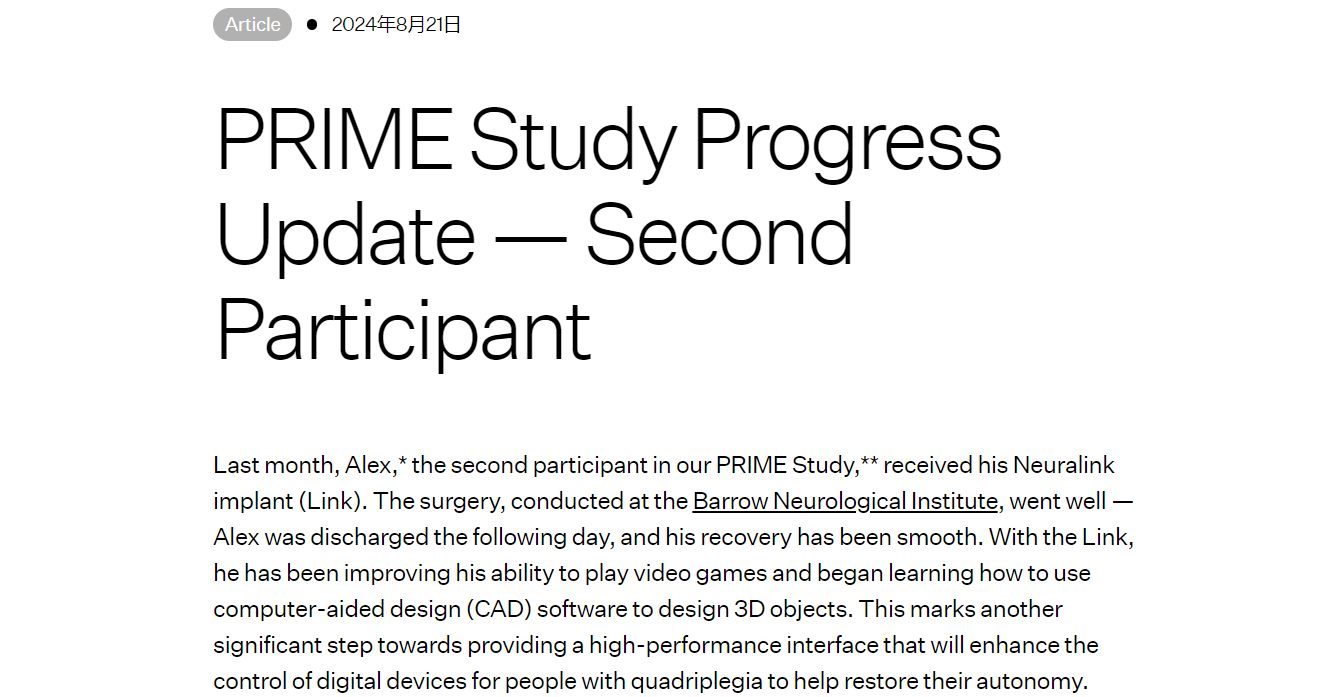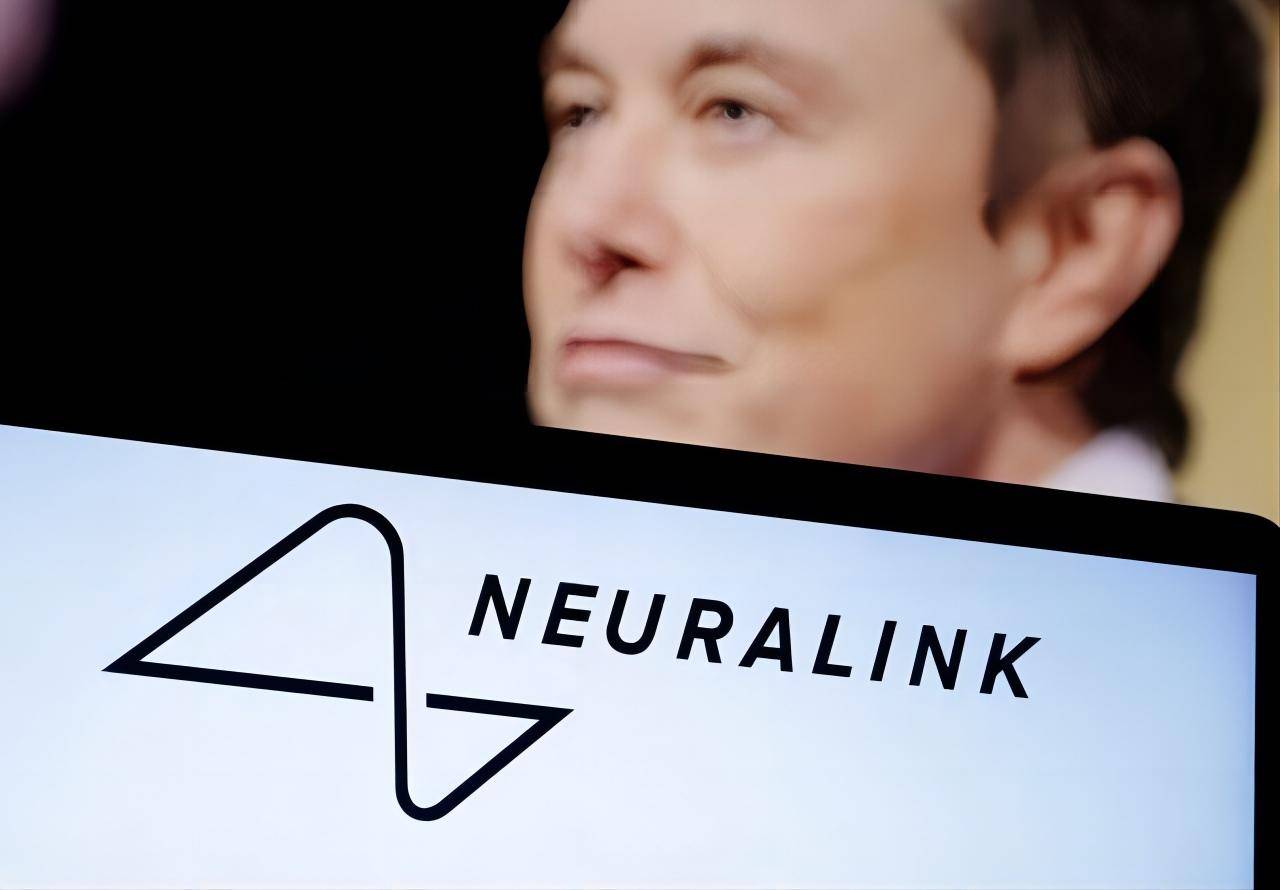Musk's Brain-Computer Interface Company Reports Successful Device Implantation in Second Participant
On August 21, Musk's brain-machine company Neuralink announced that the implantation of a brain-computer interface device in a second participant, Alex, went well, and Alex's recovery is going well.
On August 21, Neuralink, Musk's brain-machine company, announced that a second participant, Alex, had undergone surgery to implant the company's fully implantable wireless brain-computer interface (BCI) device. The surgery went well and Alex's recovery process is going well.

In January, Neuralink implanted its research-based BCI device into its first patient, Noland Arbaugh, and the company's BCI device, called Link, was described as recording neural signals using 1,024 electrodes on 64 “wires” thinner than a human hair.
Neuralink says it took Alex less than five minutes to start controlling the cursor with his mind from the moment he connected the Link to his computer. Similar to the first participant, Noland, Alex broke the previous world record for BCI cursor control with a non-Neuralink device on his first day with Link, and Alex was even able to use Link to play the first-person shooter Counter-Strike 2,” Alex said.
Alex stated, “I'm already impressed with how it works.”
Prior to his spinal cord injury, Alex worked as an automotive mechanic, repairing and fixing all types of vehicles and large pieces of machinery.Alex has also always dreamed of learning how to design 3D objects using computer-aided design (CAD) software. According to Neuralink, on his second day with Link, Alex used the CAD software Fusion360 for the first time and successfully designed a customized bracket for his Neuralink charger, which was 3D printed and integrated into his setup.
According to Alex, “Turning an idea into a design and actually having a finished physical object made me feel like I was creating something again.”
Previously, the first participant, Arbaugh, had experienced a certain amount of “wire” retraction on his Link, which resulted in reduced performance of the device. To reduce the probability of “wire” retraction in the second participant, Neuralink implemented a series of mitigating measures, including reducing brain movement during the procedure and reducing the gap between the implanted device and the surface of the brain. “Reassuringly, we observed no thread retraction in the second participant.”
Last month, Musk and joined several Neuralink executives for a live stream on X to give an update on the company.
During the livestream, Musk raved about Neuralink's technology. Musk said Neuralink's short-term goal is to help people with brain and spinal cord injuries by enabling them to control their cell phones and computers with their minds. And the long-term goal is to “mitigate the long-term threat to civilization from artificial intelligence.” Musk believes Neuralink can help achieve this goal by creating “a closer symbiotic relationship between human and digital intelligence”. The idea, he said, “is to give people superpowers.”

·Original
Disclaimer: The views in this article are from the original Creator and do not represent the views or position of Hawk Insight. The content of the article is for reference, communication and learning only, and does not constitute investment advice. If it involves copyright issues, please contact us for deletion.